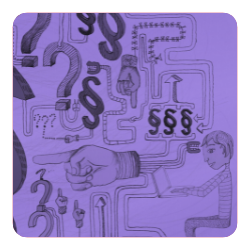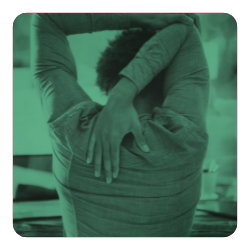Equality despite diversity - a nurse's tale?
Diversity, inclusion and Euqality have received a significant boost in recent years, gaining widespread acceptance and tolerance in both society and companies. The concepts are well known: Diversity, for example, describes the variety of people and recognizes the uniqueness of the person. Inclusion, on the other hand, aims to include all people - despite or precisely because of their diversity - and to allow them to participate in all facets of social life. Equality, on the other hand, is to be viewed two-dimensionally and is composed of equal rights and equality. The former presupposes that all people are equal before the law and accordingly have the same rights and obligations, enabling everyone to have the same opportunities. Equality, on the other hand, goes one step further: its aim is to ensure that underrepresented groups are no longer outnumbered with the help of appropriate measures, but participate equally in terms of numbers - including in working life. In recent years, countless laws have been passed and corporate strategies developed on the basis of these concepts. But have these borne fruit? What is the situation in Germany? And how do the largest economic nations compare?
Diversity as a marketing tool: Much smoke for nothing?
A study conducted in 2020 shows that around 67 percent of companies in Germany see concrete advantages in implementing diversity concepts. These benefits are amply demonstrated by numerous studies. For example, a company that actively promotes diversity can become more attractive to employees and foster creativity and innovation. It can also build up its market reputation and thus tend to hold its own better against competitors. In addition, studies from 2021 indicate that companies that actively promote diversity often also excel in ESG. This suggests that managers who promote gender diversity also tend to act more socially, environmentally and sustainably. Large corporations in particular stand out as pioneers in this regard.
Diversity has increasingly become a marketing tool. Large companies in particular are promoting their commitment to more diversity and inclusion. As a result, the topic is also increasingly in the public consciousness. Almost every second employer in Germany considers it very important to pay attention to diversity in recruiting. However, not only in Germany, but also in other European countries, corporate managers are recognizing the importance of diversity and inclusion and are positioning themselves accordingly - also strategically. At the same time, companies are becoming more open about LGBTQ+ issues.
The reality: lower salaries, fewer management positions
Basically, this is a positive picture that would allow us to look to the future with optimism - if words were followed by deeds. Unfortunately, the statistics tell a different story. This is already evident in the equality of men and women. For example, on average in Europe, only about 35 percent of board members are women, and only about 7 percent have a female CEO. There are still companies in which women are completely absent from management positions. And there are also chasms when it comes to salary: According to the European Commission, the gender pay gap in Europe is around 14 percent. The situation varies greatly from country to country: While Luxembourg has the smallest gender pay gap with an average wage difference of around 1.4 percent, women in Estonia earn almost 22 percent less than their male colleagues.
According to the EU Commission, the reason for the sometimes enormous wage differences lies primarily in so-called sectoral segregation. For example, around 24 percent of the gender pay gap is due to the overrepresentation of women in relatively low-paid sectors such as care, health and education. At the same time, women statistically work more hours per week than men, but more often doing unpaid work. Wage discrimination also remains a real problem. In some cases, for example, women earn less than men for the same work or work of equal value - even though the principle of equal pay has been enshrined in the European treaties since 1957.
Commitment to diversity and equal opportunities - the solution?
Politicians have also recognized the problem. For example, the EU Commission has developed comprehensive packages of measures to reduce discrimination and promote a diverse and inclusive working environment in Europe. One of the lighthouse projects is the "EU Diversity Charter," with which the Commission coordinates national self-commitment initiatives. Numerous companies have already signed a Diversity Charter, committing themselves to more diversity and equal opportunities for their workforces. This also includes gender equality.
Nevertheless, practical experience shows that overall development is too slow to achieve the EU target in the foreseeable future. This also applies to Germany: Only 18 percent of all board members in DAX-30 companies are women. Although the proportion of women on management and supervisory boards has increased steadily in recent years, fundamental problems remain unresolved. The payment gap has still not been closed. And the perception of employees is also sobering: Around half of employees have already witnessed social discrimination in the company. In a survey conducted by a major job platform in this country, the majority of participants stated that, in their opinion, people were disadvantaged at work because of their gender, age or origin. For around 45 percent, diversity was completely non-existent in their companies.
Germany in international comparison
In short, Germany is obviously lagging behind when it comes to diversity, inclusion and equality. Other countries seem to be much further ahead - as can be seen from the examples of France and Great Britain: There, around 60 percent of employees said they would be more likely to apply for a job at a company with women in top management - in Germany, the figure was only 34 percent. At the same time, employees in these two countries are more sensitive to social diversity.
But how does Germany fare in a country comparison, even beyond the borders of Europe? - This is the occasion for a comparison of the world's five largest economies.
Germany and the U.S.
In Germany, around 4,800 companies have currently signed the national Diversity Charter - a top figure by European standards. Around half of the signatories are private companies, while around 16 percent are from the public sector. Diversity management has experienced a significant upswing in recent years and is increasingly becoming a task at senior management level in German companies. Nevertheless, women continue to be significantly underrepresented at board level. The gender pay gap is also still enormous and has changed only marginally. In 2000, for example, women earned around 21 percent less gross than their male colleagues. In 2021, the difference was still 18 percent. In a European comparison, Germany thus has a strikingly large gender pay gap and, together with Austria and Estonia, brings up the rear in Europe. Yet the legal framework for an equal-opportunity society has already been created with the Federal Equality Act, the Disability Equality Act and the General Equal Treatment Act, as well as corresponding laws at the state level.
In the U.S., equal rights and equal treatment have always been hotly debated topics. This is especially true with regard to systemic racism, which has received worldwide attention due to the active Black Lives Matter movement and also has an impact on the professional environment. The facts are clear: U.S. citizens of color continue to earn significantly less than whites and are far more likely to be caught in the crosshairs of the justice system. If convicted, they receive nearly 20 percent longer prison sentences for the same crime than their white counterparts. Similar disadvantages are evident in wealth, education and leadership positions - and even in life expectancy, which is on average about 3.5 years lower for U.S. people of color than for their white peers. Even Amnesty International criticizes the fact that refugees, migrants and people-of-color are particularly hard hit by discrimination in the USA. But women also remain disadvantaged: While the gender pay gap is steadily declining, women in the U.S. still earned only 83 cents for every dollar earned by men in 2020. Yet anti-discrimination laws have a long tradition in the US. As early as the 1960s, the U.S. Equal Employment Opportunity Commission was founded there, which as a federal agency was given the task of combating discrimination in the world of work.
What about Asian countries?
In China, numerous measures have been taken to equalize people with disabilities and a Disability Act has been passed, which, among other things, grants disabled people the right to education and prescribes a quota for companies to employ disabled workers. According to statistics, more than 73 percent of disabled people are successfully integrated into the labor market. In practice, however, things look different in many provinces: Unlike war veterans and victims of industrial accidents, people with congenital disabilities are not protected by the state - with sometimes draconian consequences, especially in rural regions. And that's not all: Although according to the government non-existent, human rights organizations have for years criticized the systematic violation of the human rights of minorities - this includes torture, re-education and oppression.
And women are not exempt from this unequal treatment. Equal rights for men and women played a central role in the early days of the Chinese Communist Party. For example, one of the first measures was the enactment of a new marriage law in 1950, which, among other things, abolished forced marriages and gave women the right to divorce. Equal rights for women and men were also enshrined in the constitution as a fundamental right. The practice, however, looks different: Women in China - regardless of age and education - earn only 71.6 percent of the wage level of men. This is hardly surprising, given that the classic image of the family with its traditional division of roles is still widespread today and is diligently propagated by the majority male government up and down the country. The trend in gender equality is thus anything but rosy: Between 2008 and 2021, China slipped from 57th place to a sad 107th place in the World Economic Forum's Global Gender Gap Report.
Japan is considered a high-tech country - but it lags far behind when it comes to equality. Although women and men are equal under the constitution, there are considerable differences in practice, both at work and in private life. At around 22.5 percent, the gender pay gap is significantly higher than in the U.S., Germany and the U.K., making it the highest among the G-7 countries. For example, Japanese women are statistically less likely to have permanent full-time jobs and are significantly underrepresented in both parliaments and boards of directors. Only 14.7 percent of management positions in business enterprises are held by women - even though around 72 percent of Japanese women are employed.
The situation is much worse in India, where unequal treatment and discrimination are a serious problem. Discrimination against casteless Hindus or Muslim minorities in particular, but also against people of other skin colors, is widespread. Human rights activists regard the caste system in particular as a breeding ground for racism and discrimination. The country also ranks among the last in terms of gender equality. Inequality is omnipresent and has increased significantly in recent years. According to the World Economic Forum, it could take India around 200 years to close the gap between men and women. According to the World Inequality Report 2022, men earn about 82 percent of India's total income, while only 18 percent falls on women. At the same time, the mortality rate of girls is higher than that of boys.
Europe and Great Britain
Historically, the population in Great Britain has been characterized by a high degree of ethnic diversity. Especially after World War II, many immigrants came to the country, mainly from other Commonwealth countries such as India, Pakistan or Hong Kong. In 2018, almost 14 percent of the British population belonged to an ethnic minority. In the capital, the figure was as high as 40 percent. Not surprisingly, anti-discrimination laws have a long history here. For example, the Sex Discrimination Act 1975 on the prevention of gender discrimination and the Race Relations Act 1976 on discrimination based on ethnicity form the foundation of national legislation. On the other hand, there is still work to be done on the issue of equal rights for men and women. In 2018, for example, the gender pay gap was still nearly 20 percent in the private sector, and 12 percent in the public sector.
Ethnic diversity also has a long tradition in France and continues to trigger social tensions. More than 4,500 institutions have committed to greater equality and equity by signing the French Charter, which was launched in 2004. And the state has also recognized the importance of gender equality, stipulating that a full 75 percent of state-funded projects should promote gender equality by 2025. This commitment is urgently needed: Women in the French private sector earn on average 15.8 percent less than men. In the public sector, the pay gap is still 10.5 percent. This puts the gender pay gap above the European average.
The situation is different in Italy. In terms of the gender pay gap, the country on the Mediterranean cuts a comparatively good figure: at just 3.9 percent, Italy is one of the European leaders. When it comes to pensions, however, there is an acute need for action. On average, women in Italy receive about a third less pension than their male counterparts. This is despite the fact that around 900 companies have signed the Italian Charter for Equal Rights, which was initiated by the Ministry of Labor. However, there is still a need for action in terms of legislation: As recently as 2021, a law against homophobia and transphobia failed before the Italian parliament. And the country is still considered conservative and less progressive in other areas as well.
The overview shows: The road toward more diversity and equal treatment in society and the workplace is rocky. But what makes implementing diversity, inclusion and equality so difficult in practice? - A 2017 European survey already reveals a fundamental problem. For example, few of the respondents saw diversity as improving the quality of life in their country - quite the opposite. In countries like Greece or Italy, more than half of the participants even thought diversity would lead to a deterioration. And in Germany, too, only 26 percent thought diversity would make the country a better place to live.
Companies as ambassadors of diversity
Even simple measures can help to reduce inequality and inequity. In addition to the introduction of flexible working time models, the most important measures for increasing diversity, inclusion and equality in one's own company include an appropriate recruitment process, family-friendly offerings, and workplace design that is suitable for people with disabilities and older employees. Targeted measures for greater tolerance and acceptance with regard to sexual orientation and identity, as well as lateral entry programs, have also proven successful in practice.
In order to measure the success of diversity management in one's own company, specific key performance indicators (KPIs) should be defined and monitored. In addition to the ratio of men to women in management or other key positions, it is also possible to measure how many male and female applicants there are in comparison, and how often they are invited to interview on average. The proportion of employees who have received training on diversity and inclusion can also be measured. With the help of a holistic concept consisting of suitable strategies, targeted measures to raise awareness of the benefits of diversity and equality, but also overarching programs to promote minorities, every company can make its contribution to a colorful, open and equal-opportunity society and thus become an ambassador for diversity, inclusion and equality.































